
The Lombards or Longobards were a Germanic people who conquered most of the Italian Peninsula between 568 and 774.

Paul the Deacon, also known as Paulus Diaconus, Warnefridus, Barnefridus, or Winfridus, and sometimes suffixed Cassinensis, was a Benedictine monk, scribe, and historian of the Lombards.

The Exarchate of Ravenna, also known as the Exarchate of Italy, was an administrative district of the Byzantine Empire comprising, between the 6th and 8th centuries, the territories under the jurisdiction of the exarch of Italy resident in Ravenna. The term is used in historiography in a double sense: "exarchate" in the strict sense denotes the territory under the direct jurisdiction of the exarch, i.e. the area of the capital Ravenna, but the term is mainly used to designate all the Byzantine territories in continental and peninsular Italy. According to the legal sources of the time, these territories constituted the so-called Provincia Italiae, on the basis of the fact that they too, until at least the end of the 7th century, fell under the jurisdiction of the exarch and were governed by duces or magistri militum under him.

Rodulf was king of the Heruli kingdom on the Middle Danube in the period around 500, and possibly of Scandinavian origin. He died in a battle in about 508, with the neighbouring Lombards, which led to the splitting up of the Heruli. He is probably the same Heruli king that Theoderic the Great wrote to in two surviving letters which do not mention his name, in one of which Theoderic "adopted" him with a gift of arms. Less certainly, many scholars also equate him to the King Rodulf that Jordanes mentions as having come from Scandinavia to Italy, to join Theoderic.

Rothari, of the house of Arodus, was king of the Lombards from 636 to 652; previously he had been duke of Brescia. He succeeded Arioald, who was an Arian like himself, and was one of the most energetic of Lombard kings. Fredegar relates that at the beginning of his reign he put to death many insubordinate nobles, and that in his efforts for peace he maintained very strict discipline.
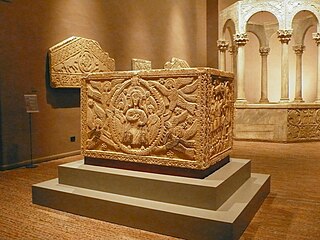
Ratchis was the Duke of Friuli (739–744) and then King of the Lombards (744–749).
Wacho was king of the Lombards before they entered Italy from an unknown date until his death in 539. His father was Unichis. Wacho usurped the throne by assassinating his uncle, King Tato. Tato's son Ildchis fought with him and fled to the Gepids where he died. Wacho had good relations with the Franks.
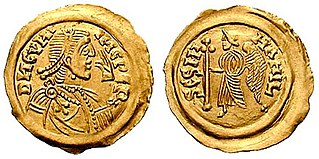
Cunipert was king of the Lombards from 688 to 700. He succeeded his father Perctarit, though he was associated with the throne from 680.

The Origo Gentis Langobardorum is a short, 7th-century AD Latin account offering a founding myth of the Longobard people. The first part describes the origin and naming of the Lombards, the following text more resembles a king-list, up until the rule of Perctarit (672–688).
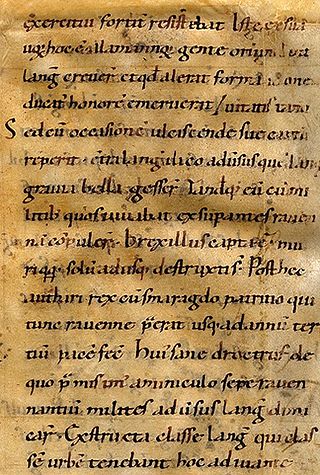
The History of the Lombards or the History of the Langobards is the chief work by Paul the Deacon, written in the late 8th century. This incomplete history in six books was written after 787 and at any rate no later than 796, maybe at Montecassino.
The Rule of the Dukes was an interregnum in the Lombard Kingdom of Italy (574/5–584/5) during which part of Italy was ruled by the Lombard dukes of the old Roman provinces and urban centres. The interregnum is said to have lasted a decade according to Paul the Deacon, but all other sources—the Fredegarii Chronicon, the Origo Gentis Langobardorum, the Chronicon Gothanum, and the Copenhagen continuator of Prosper Tiro—accord it twelve years. Here is how Paul describes the dukes' rule:
After his death the Langobards had no king for ten years but were under dukes, and each one of the dukes held possession of his own city, Zaban of Ticinum, Wallari of Bergamus, Alichis of Brexia, Euin of Tridentum, Gisulf of Forum Julii. But there were thirty other dukes besides these in their own cities. In these days many of the noble Romans were killed from love of gain, and the remainder were divided among their "guests" and made tributaries, that they should pay the third part of their products to the Langobards. By these dukes of the Langobards in the seventh year from the coming of Alboin and of his whole people, the churches were despoiled, the priests killed, the cities overthrown, the people who had grown up like crops annihilated, and besides those regions which Alboin had taken, the greater part of Italy was seized and subjugated by the Langobards.
Droctulf was a Byzantine general of Suevic or Alemannic origin. According to Paul the Deacon's Historia Langobardorum, he was raised among the Lombards, with whom he entered the Italian peninsula in 569. He eventually joined the Byzantine army to fight against them, becoming an important ally of both Emperor and Pope.
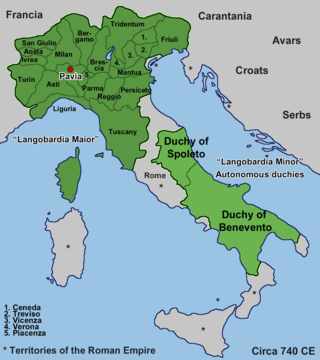
The Kingdom of the Lombards, also known as the Lombard Kingdom and later as the Kingdom of all Italy, was an early medieval state established by the Lombards, a Germanic people, on the Italian Peninsula in the latter part of the 6th century. The king was traditionally elected by the very highest-ranking aristocrats, the dukes, as several attempts to establish a hereditary dynasty failed. The kingdom was subdivided into a varying number of duchies, ruled by semi-autonomous dukes, which were in turn subdivided into gastaldates at the municipal level. The capital of the kingdom and the center of its political life was Pavia in the modern northern Italian region of Lombardy.

The Duchy of Friuli was a Lombard duchy in present-day Friuli, the first to be established after the conquest of the Italian peninsula in 568. It was one of the largest domains in Langobardia Major and an important buffer between the Lombard kingdom and the Slavs, Avars, and the Byzantine Empire. The original chief city in the province was Roman Aquileia, but the Lombard capital of Friuli was Forum Julii, modern Cividale.

Cunimund was the last king of the Gepids, falling in the Lombard–Gepid War (567) against the Lombards and Pannonian Avars.

The Duchy of Tridentum (Trent) was an autonomous Lombard duchy, established by Euin during the Lombard interregnum of 574–584 that followed the assassination of the Lombard leader Alboin. The stronghold of Euin's territory was the Roman city of Tridentum in the upper valley of the Adige, in the foothills of the Alps in northern Italy, where the duchy formed one of the marches of the Lombard Kingdom of Italy. There he shared power with the bishop, who was nominally subject to the Patriarch of Aquileia. In 574–75, Lombard raiding parties pillaged the valley of the Rhône, incurring retaliatory raids into the duchy by Austrasian Franks, who had seized control of the mountain passes leading into the kingdom of Burgundy. Euin was at the head of the army loyal to Authari that went into the territory of the duke of Friuli in Istria, c 589, and he was sent by Agilulf to make peace with the Franks his neighbors, in 591. After Euin's death c 595, Agilulf installed Gaidoald, who was a Catholic, rather than an Arian Christian. After some friction between king and duke, they were reconciled in 600. The separate Lombard duchy of Brescia was united with Tridentum in the person of Alagis, a fervent Arian and opponent of the Lombard king, Perctarit, who was killed in the battle of Cornate d'Adda (688).
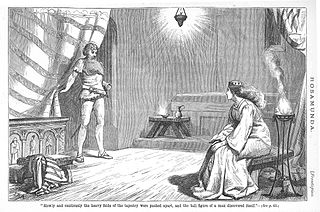
Helmichis was a Lombard noble who killed his king, Alboin, in 572 and unsuccessfully attempted to usurp his throne. Alboin's queen, Rosamund, supported or at least did not oppose Helmichis' plan to remove the king, and after the assassination Helmichis married her. The assassination was assisted by Peredeo, the king's chamber-guard, who in some sources becomes the material executer of the murder. Helmichis is first mentioned by the contemporary chronicler Marius of Avenches, but the most detailed account of his endeavours derives from Paul the Deacon's late 8th-century Historia Langobardorum.
Thurisind was king of the Gepids, an East Germanic Gothic people, from c. 548 to 560. He was the penultimate Gepid king, and succeeded King Elemund by staging a coup d'état and forcing the king's son into exile. Thurisind's kingdom, known as Gepidia, was located in Central Europe and had its centre in Sirmium, a former Roman city on the Sava River.
The Historia Langobardorum codicis Gothani, also called the Chronicon Gothanum, is a history of the Lombard people written at and for the court of King Pippin of Italy between the years 806 and 810. It is preserved in the 10th/11th century Codex Gothanus 84, from which its conventional Latin titles are derived; The chronicle is not titled in the manuscript. The text is ideologically pro-Carolingian, and among its sources are Isidore of Seville and possibly Jerome.











